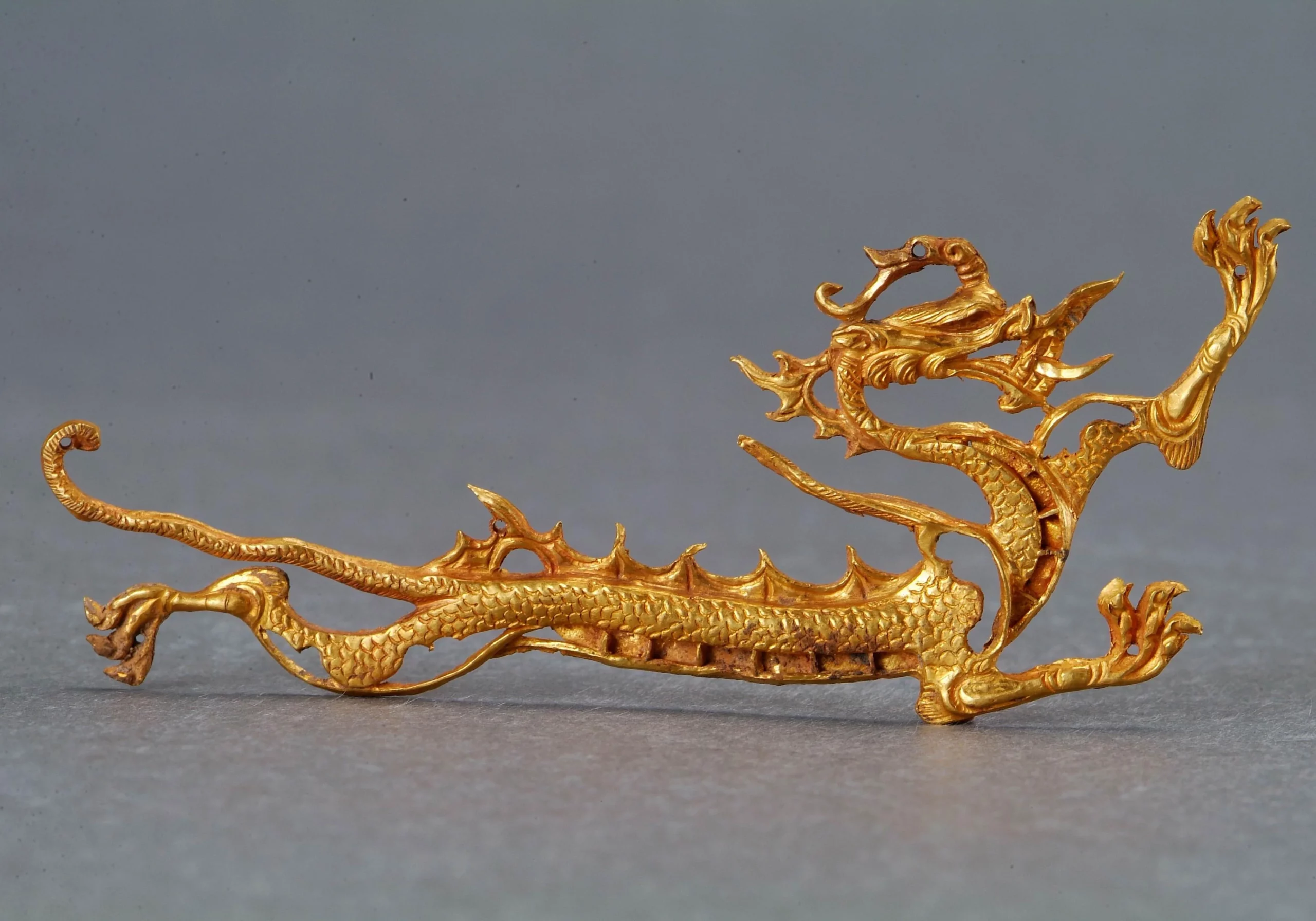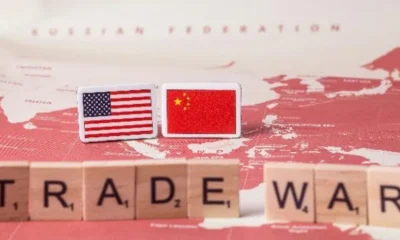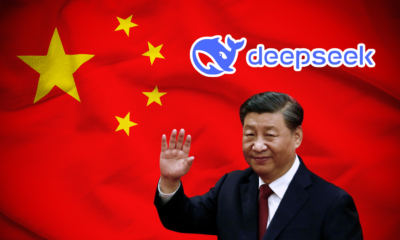Published
11 months agoon

China has unearthed a monumental gold discovery in Hunan province, potentially reshaping its gold strategy and solidifying its global standing. This find, valued at a staggering $83 billion, is more than just a glittering treasure—it could serve as a strategic coup.
The Golden Jackpot
Nestled in Pingjiang County, the Wangu gold mine revealed over 1,000 tonnes of gold deposits, with more than 40 new veins discovered. To put it simply, it’s a supergiant. With reserves totaling over 300 tonnes in the core area alone, this mine will now be central to China’s commitment to strengthening its domestic resources.
This isn’t a standalone story. It’s part of a broader push by China to explore and secure its mineral wealth. Since 2020, Hunan authorities have poured over 100 million yuan into mineral exploration, signaling the region’s significance. This discovery, according to Liu Yongjun of the Hunan Provincial Geological Institute, is nothing short of a milestone for China’s mineral exploration strategy.
China’s love affair with gold has been hard to miss. Over the past few years, its demand surged as economic uncertainty fueled a rush to hoard the precious metal. Consumers and retail investors alike contributed to a spike in gold holdings, making China one of the largest gold buyers globally.
But lately, the sparkle has dimmed. The Chinese central bank paused its gold purchases earlier this year, and a stronger U.S. dollar coupled with a weaker yuan has taken some shine off the gold rush. Prices have dipped, and retail gold jewelry is now more affordable, with major brands like Chow Tai Fook cutting prices by nearly 10% in recent months.
Could this mega-discovery signal a turning point in China’s gold-buying spree? Possibly. While domestic reserves like Wangu could ease the need for external purchases, they might also position China as a stronger player in global gold trade.
A Pattern of Discovery
This isn’t China’s first glittering find. In May 2023, Shandong’s Xiling gold mine confirmed an additional 200 tonnes of gold reserves, bringing its total to 580 tonnes. Earlier, Qinghai province discovered 43.2 tonnes, and Sichuan uncovered nearly 5 million tonnes of rare earths in September. Clearly, China’s investment in resource exploration—up 8% year-on-year in 2022—is paying off
As the world’s largest gold producer since 2007, China accounted for over 13% of global output in 2017, producing 426 tonnes of gold. This achievement isn’t spread thin; it’s concentrated in over 3,300 mining areas operated by around 400 companies, with giants like China National Gold Group and Shandong Gold leading the charge.
China’s recent gold-buying spree by the People’s Bank of China (PBC) outlines its broader economic strategy. Until April 2023, the PBC purchased gold for 17 consecutive months, making it the most aggressive central bank buyer of the year.
The rationale? Gold is a time-tested safe haven, particularly during periods of economic and geopolitical turmoil. With conflicts in the Middle East, ongoing war in Ukraine, and inflationary pressures post-COVID, gold offers China a hedge against currency devaluation and stock market volatility.
And this strategic accumulation isn’t limited to domestic shores. Chinese companies have been acquiring gold assets abroad, investing $4 billion since 2011 and boosting reserves by over 800 tonnes. From Australia’s Norton Gold Field to Congo’s Kolwezi Copper Field, Chinese firms like Zijin Mining Group have expanded their reach, solidifying China’s gold footprint globally.
China Accumulating Gold
For a country which has been struggling with slowing economic growth and a weakening yuan, gold offers stability. It’s not just a precious metal—it’s an insurance policy and by strengthening its reserves, China is better positioned to weather financial storms and maintain its economic sovereignty.
Moreover, this discovery could support China’s Belt and Road Initiative (B&R) by securing resources from within and beyond its borders. Last year alone, China imported 854,150 tonnes of gold raw materials from 55 countries, 19 of which are part of the B&R initiative. This interconnected approach strengthens China’s ties with resource-rich regions while safeguarding its supply chains.
China’s growing appetite for gold is a calculated strategy to reduce its reliance on the US dollar and fortify its economic resilience. As the world’s reserve currency, the dollar dominates global trade, but Beijing is actively working to diversify its foreign exchange reserves and diminish its vulnerability to the greenback’s fluctuations.
For one it wants to move away from the Dollar. China’s dependence on the US dollar for international trade has long been a point of concern. Since 2011, the country’s dollar holdings have steadily declined, a trend that has picked up pace in the post-pandemic era. This shift is aligned with broader objectives of the BRICS nations—Brazil, Russia, India, China, and South Africa—who are exploring the possibility of a shared currency to challenge the dollar’s dominance by 2050.
Two, wanting to reduce Dollar’s diplomatic power – the United States’ ability to use the dollar as a tool for geopolitical leverage has further motivated China’s diversification efforts.
Recent events have shown this power: sanctions on Russia following its invasion of Ukraine, and the exclusion of Russian banks from the SWIFT system, demonstrated how the dollar can be weaponized to isolate nations economically.
For China, these actions serve as a warning. With ongoing trade tensions and concerns over potential conflicts related to its military ambitions, Beijing fears it could face similar economic sanctions. This possibility has accelerated its strategy to insulate itself from dollar-dependent vulnerabilities, with gold emerging as a cornerstone of this plan.
Gold offers China a hedge against currency devaluation and global economic uncertainty. Unlike the dollar, gold is not tied to any single nation’s policies or economic performance, making it a safe and stable asset. By increasing its gold reserves, China strengthens its ability to withstand global economic disruptions and potential sanctions.
Therefore, China’s gold accumulation is a multi-layered strategy. It’s about reducing dependence on the dollar, safeguarding its economy against external pressures, and aligning with the long-term goals of BRICS nations to reshape the global financial order.
The Last Bit
China’s latest gold discovery is more than a glittering find with the largest reserves and production capabilities in the world, China is leveraging gold not just as a commodity but as a tool for economic resilience and geopolitical influence.
The global economy is facing increasing uncertainties, China’s investment in gold—both domestic and international—signals a clear strategy: prepare for turbulence, secure the future, and assert dominance.
As Beijing builds its golden reserves, it signals a clear intent: to fortify its financial independence and challenge the existing economic hegemony. For now, the discovery reinforces China’s golden grip on the world stage, promising stability at home and leverage abroad.



Taiwan’s ‘Historic’ TSMC Deal, A Win Or The End Of Its ‘Silicon Shield’ As China Threatens? A Jittery Taiwan Watches Trump’s Moves On Ukraine, Wondering, Could We Be Next?


A Trade War That Just Won’t Quit. As Trump’s Tariffs Hit, China Stays The Course, For Xi’s Its Business As Usual Strategy


Indian Stock Market In Turmoil. Investors In Panic Mode, Is This A Temporary Correction Or The Start Of A Bear Market?


America And China’s Thirst For Gold In 2025 Is Draining Other Countries’ Reserves; Here’s Why?


Shakeup In The Auto Sector. Mercedes-Benz 15% Job Cuts, Nissan CEO Exit, And Germany’s Make-Or-Break Year


DeepSeek Ai Rush. China’s AI Contender Gears Up for Next Big Launch Even As It Gets Xi Jinping’s Blessings